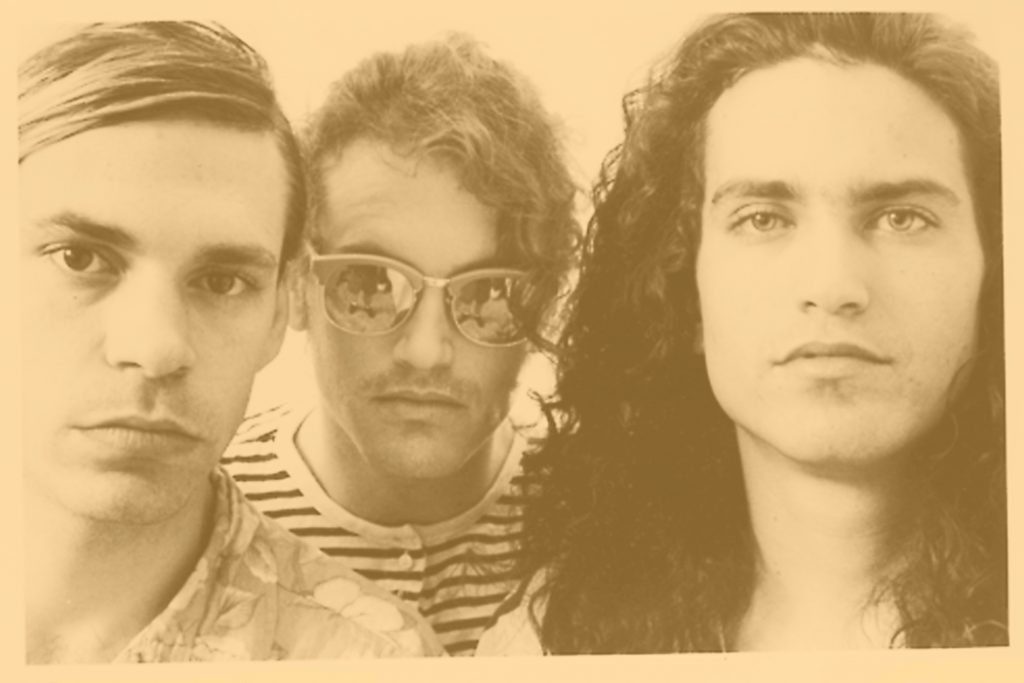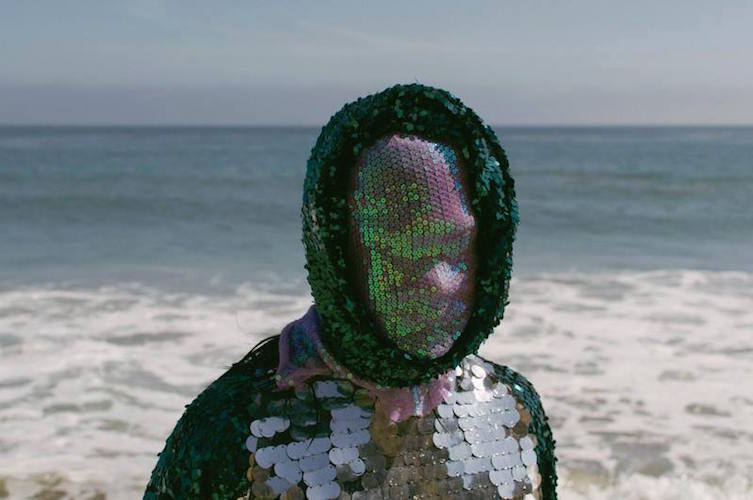+ Our brand new course with The Dillinger Escape Plan’s Ben Weinman teaches how to make a living in music without making sacrifices. Check out The Business of Uncompromising Art, out now exclusively on Soundfly.
As a child, I would often write songs to make light of difficult situations. When I wondered why it was necessary to eat vegetables, I made up silly songs about my parents eating spinach. I’ll never forget writing songs with childhood friends about Free Willy being set loose in my friend’s swimming pool.
These early experiences are ones I will always treasure; and this spirit of play would continue to define not only my taste in music, but my approach to composing and producing my own as well. They also led to what has become a lifelong pursuit of the strangest, most random music I could get my hands on.
I reflect back on the first stop on this journey, my relentless search for the weird, and remember that my local record store, called Exile on Main Street, was where Kimya Dawson used to advertise her band The Moldy Peaches years before they ever received recognition. It was there that I bought what would become one of my all-time favorite albums, Meat Puppets 2.
Listening to it was an experience unlike any I’d had before; impenetrable walls of distorted guitar feedback, screeching out of tune vocals, nonsensical lyrics such as: “Oh Mary Lou, won’t you tell me what to do, got a dollar on the corner and a laser in my shoe,” from the epic opener “Split Myself in Two.”
My listening ear was forever changed. The Meat Puppets and their contemporaries’ DIY approach to throwing everything at the wall to see what stuck, became an obsession that I felt compelled to totally swan dive into. I will always have a soft spot for music with a distinctive raw, unpolished sound.
Many of the greatest musical architects of new sounds and trailblazers of genres, have championed a more esoteric, even childlike, approach to writing and composition. When listening to this music, I often wonder, how frequently did this off-kilter approach that many of the great songwriters and composers are known for come about unintentionally?
A handful of DIY originators found their signature sound due to lack of funding and access to conventional means of recording and distribution, even the inability to play their own instruments in a technically proficient way, some just did it in protest to conventions that didn’t fit their way of interacting with music. DIY music is black sheep music, for those of us who feel like the black sheep in the herd.
Going a bit farther back, John Fahey was known as a trailblazer of fingerstyle guitar playing. He recorded his first album, Blind Joe Death, with barely a pocketful of cash.
In these early years of struggle, even the hundred copies of the album that he was barely able to print took him several years to sell. In spite of this struggle and poverty, as well as a lack of interest in and among other folk-blues guitarists of his day, all these experiences were formative in Fahey pioneering his own unique vision for his music. Distributing music independently was a stretch for him, but inspired him to form his own label, Takoma Records.
Disavowing affiliation with the folk music of his day altogether, Fahey’s music could never really be pinned down or classified. The true genius of his compositional breadth came from his ability to implement a hodgepodge of musical influences including classical, Gregorian chants, and church hymns, into his own personal voice, one which championed alternate and detuned guitar playing. Rain Forests, Oceans, and Other Themes, released in 1985, showcases how Fahey’s eclectic style and influences could culminate into his own unique voice. This was especially apparent on his track, “May This Be Love/Casey Jones.”
Though having such an esoteric vision made success more difficult to come by, Fahey was quite the prolific artist. Takoma records even signed a handful of esoteric greats such as Leo Kottke, another pioneer who pushed the boundaries of finger-style guitar playing to new heights. Eventually in the 1990s, Fahey’s music had a resurgence, gaining him mainstream success. Though his musical voice and vision didn’t bring him the recognition he deserved in his lifetime, Fahey is regarded as one of the greatest guitarists of all time.
An unlikely musical act who pushed musical boundaries with their whimsical, childish lyrics, out of tune guitars, and strange, dissonant made up chords, was the sister-trio the Wiggins, better known as The Shaggs. Growing up in Fremont, New Hampshire, Dot, Betty, and Helen Wiggin grew up having limited exposure to music of any kind. Austin, their frenzied father, had received a palmistry vision which foretold his three daughters forming a successful music group. Fanatically guided by his vision, Austin pulled his three daughters out of school, handed them instruments, and told them to form a band. Thus the Shaggs were born, and their 1969 album, Philosophy of the World, was their first and only studio album.
Forming a band had never been sisters’ idea — they were at first resistant to it — but they persisted due to their domineering and manipulative father’s will. Ironically, their approach was a catalyst for a sound that was uniquely their own, and birthed peculiar pop songs which beautifully showcase a unique childlike sensibility. The band’s limited exposure to other music became their secret weapon.
A telling example of the ways in which their unique perspective bleeds through into the music appears in the song, “Why Do I feel?.” The disorganized drumming, an utter lack of rhythmic form, and Dot Wiggin’s lyrics come together in a touching way, showcasing the pain and confusion of growing up. She sings: “Sometimes I feel funny and bottled up inside, then for some reason I just start to cry.”
Though the Wiggin sisters’ may have squelched the fun out of playing music in an abusive environment, their album is considered an essential among punk and avant-garde boundary-pushers alike.
Another brilliantly sparse and minimalist gem is The Freed Man by Sebadoh. This album was recorded entirely on four track and was, in the words of songwriter Lou Barlow, “intended to be a mess.”
Half of the tracks are strange sound collages that appear to be sampling TV, radio shows, and random channel static. Yet Lou Barlow and bandmate Eric Gaffney’s approach is contextually quite fitting if approached with an open ear and a slightly dark sense of humor. The songs on the album, though non-linear in terms of structure, are brilliant pop songs with angsty lyrics about alienation. Here’s a lyric from “Narrow Stories:”
“No one knows, no one cares, and no one knows the way, unless of course you fall in love and everything is gray.”
The album was recorded during Barlow’s break from Dinosaur Jr. (where he played bass), cementing Barlow as not only an excellent bassist but a unique composer and expert pop songwriter. The cacophony of his guitar playing and the album’s lo-fidelity recording style, coupled with the relatable, raw emotion of the lyrics brilliantly showcase the confusion of college-aged young men.
In an era where recording a professionally polished album is much more easily accessible than ever before, it’s easy to disregard the great lengths that independent musicians once had to undertake not only to record, but to distribute their music. If their music made it to you at all, it was a blessing. As a musician and recording artist honing my own sound, it’s essential to remember the beauty and purity of play, not shying away from imperfection, and not taking things for granted.
As my uncle, an avid, life-long rock ‘n’ roller, would often say of pop music when I was growing up: “It’s good, but I’d rather hear something unique, something that doesn’t sound like anything else.” I think we should all strive to seek out those unique voices that resonate with us personally, I know I will.
Rev Up Your Creative Engines…
Continue your learning with hundreds of lessons on songwriting, mixing, recording and production, composing, beat making, and more on Soundfly, with artist-led courses by Kimbra, RJD2, Com Truise, Kiefer, Ryan Lott, and Ben Weinman’s The Business of Uncompromising Art.




